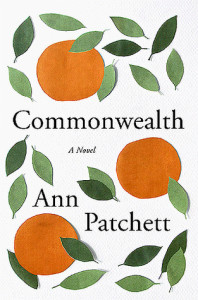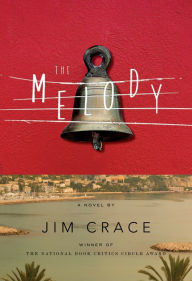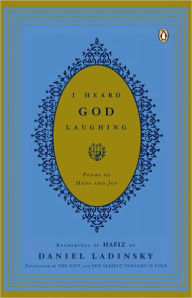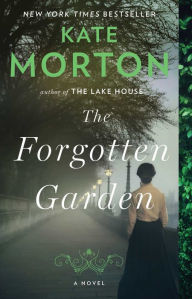B. Morrison's Blog, page 38
October 28, 2018
Sunburn, by Laura Lippman
Pauline leaves her family at the beach and returns to their rented apartment to pack her bag. Inspired by Anne Tyler’s Ladder of Years, she has decided to simply walk away from her life.
Though Tyler’s book isn’t named, I knew immediately which one was meant. Who could forget Delia on Bethany Beach, walking away from her family, carrying only a straw tote decorated with a large flower? For all of us overburdened mothers with our unrealised dreams—often undefined even to ourselves—it was as t...
October 21, 2018
Commonwealth, by Ann Patchett
This 2016 bestseller has received lots of good reviews. It begins with an unexpected and uninvited guest arriving at the christening party for Franny, second daughter of Fix and Beverly Keating. Bert Cousins brings a bottle of gin as a present, something unexpected and unusual at a christening. As the party goes on, everyone gets drunk; most people behave badly; a priest gives up his vocation; and Bert, who has a pregnant wife and three children at home, falls in love with Beverly.
I was rea...
October 14, 2018
The Melody, by Jim Crace
Alfred Busi, a famous and beloved musician and singer, is awakened in the night by animals tipping over the garbage bins. His town has honored him by including a statue of him in their Avenue of Fame, and he is to speak at its unveiling the next day. In addition, he is to give a benefit concert in two days.
At “sixty-something”, Busi is comfortable with fame and with the declining quality of his voice. But since the recent death of his wife, he has had trouble sleeping and has let their vill...
October 7, 2018
I Heard God Laughing, by Hafiz, translated by Daniel Ladinsky
I hadn’t read very much of Hafiz’s work when my poetry discussion group selected him for October. We meet once a month to read and discuss the work of a single poet. Taking turns reading the poems, we find that the discussion and the time that we take with each one helps us to appreciate them more deeply. Choosing a new poet each month introduces us to a range of authors, often ones we’ve never read before.
With Hafiz’s work, we found ourselves intrigued and moved by his humor and compassi...
October 1, 2018
Tales from the House of Vasquez, by Raquel Vasquez Gilliland
The poems in this remarkable chapbook draw us into a woman’s inner life. They lure us into the realm of magical realism were spines dissolve and babies fall from trees, where bears can speak and impart magic, where your mother can reach out from the grave and comfort you.
Summoning mythology and remembered stories from childhood Gilliland tells us of her mama, her tía who left when the author was a baby, and her grandmother’s mother who married at 13 and had a dozen babies. She tells us of a...
September 23, 2018
Ex Libris, by Anne Fadiman
An ardent reader who still remembers the glorious moment when I first decoded the black marks in a Golden Book and found a story waiting for me, I love books. And I love books about books.
This is the first of several essay collections from Fadiman, former editor of The American Scholar and a founding editor of the Library of Congress magazine Civilization. She will be speaking at the Brattleboro Literary Festival in October. The essays here are about books—loving books, living with them, bu...
September 16, 2018
Just Like February, by Deborah Batterman
As the story opens, five-year-old Rachel Cohen is worried that her hippie parents are not going to actually go through with their long-delayed wedding. Her mother keeps calling it off. For Rachel, its more than the much-fussed-over dress she’ll wear as the flower girl; it has to do with making her family seem less precarious.
Her conservative grandparents appear vividly in their humor, patience and bottomless love. Details such as Grandma’s raspberry rugelach and Grandpa’s jokes and stories...
September 9, 2018
The Two-Sided Set-up, by Eileen Haavik McIntire
Melanie Fletcher thinks she’s finally broken her string of bad choices in men when she meets Hunter at a charity event in New York City. Rich and handsome, he treats her like a queen. After a whirlwind romance, they marry but it only takes a few months for the cracks in his façade to begin to show as he moves to separate her from her friends and job.
Running for her life, Melanie ends up at her father’s marina in Tidewater Virginia. She believes her childhood with her drunken, abusive fathe...
September 2, 2018
The Forgotten Garden, by Kate Morton
It being the end of summer, I went in search of a real vacation read. Not that I was going away, but I did have a week off from grandchild babysitting duties. I wasn’t looking for a beach read; most of my vacations end up in a cabin in the woods or a footpath in the Cotswolds. Instead I wanted to immerse myself in a big, fat, multi-generational novel, preferably set in the UK.
I found it in The Forgotten Garden. As the story opens, it is 1913 and a small girl is hiding on a ship on the Thame...
August 26, 2018
Guardian’s Betrayal, by Johanna Van Zanten
“Reader, I married him.” How many stories end like Jane Eyre’s with the happy lovers overcoming all odds to be together? There are also many stories of parentless children—orphans, foster children—that end happily with them finally being adopted. But what happens next? The story may end there, but life doesn’t.
Subtitled What Happens Seven Years After Adoption?, Van Zanten’s new novel explores new territory. Suffering from malnutrition and neglect, sisters Shayla and Abby were adopted by the...













